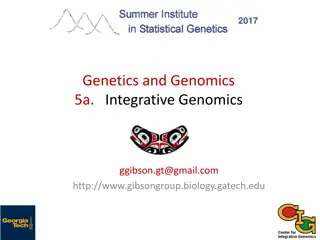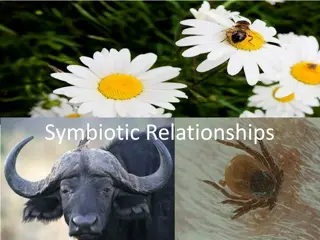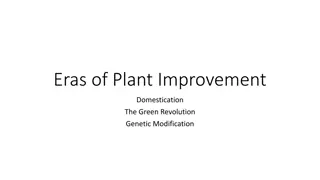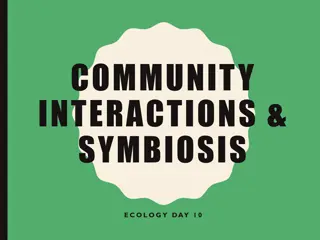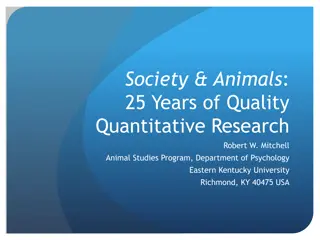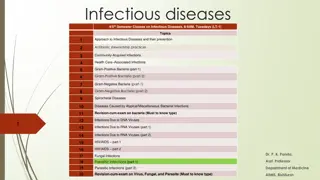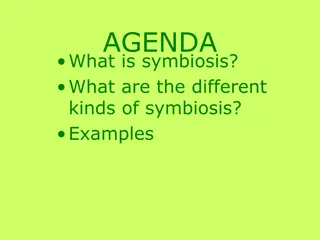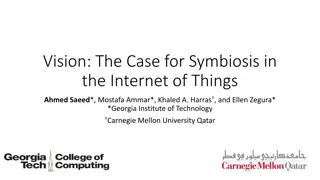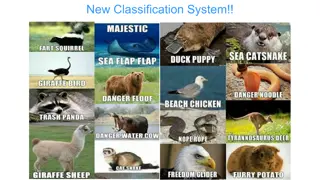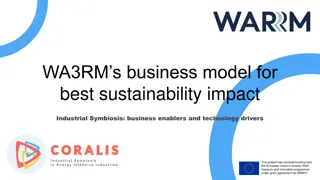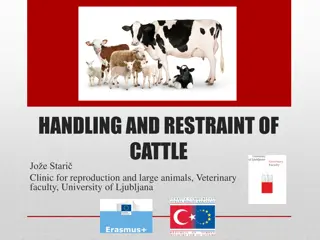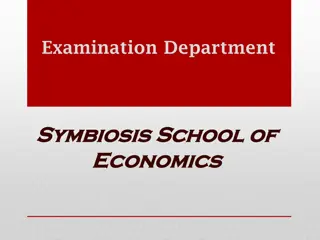Insights into Animal Domestication: From Symbiosis to Definition
Explore the intricate relationship between humans and domestic animals through the lens of symbiosis and definitions. Uncover the evolution of domestication, distinguishing between taming and true domestication. Discover the mutualistic bond that has shaped the course of history for both species.
Download Presentation

Please find below an Image/Link to download the presentation.
The content on the website is provided AS IS for your information and personal use only. It may not be sold, licensed, or shared on other websites without obtaining consent from the author. Download presentation by click this link. If you encounter any issues during the download, it is possible that the publisher has removed the file from their server.
E N D
Presentation Transcript
Information for Animal Domestication Go Get It Moment
A. Primary and secondary energy traps 1. Every organism is a primary energy trap (not related to the food chain). To be alive is to be a primary energy trap. 2. Secondary energy trap is what an organism uses to help it obtain food (camouflage, stick, gun, etc.) or to help it conserve energy (shelter, fur, etc.).
B. Human evolution 1. The oldest population lived approximately 2 million years ago. 2. The first evidence of a domestic animal, the dog, was 12,000 to 14,000 years ago. 3. The first domestic food animal was the sheep, less than 11,000 years ago. 4. Cultivation of plants began approximately 9,000 years ago. 5. Humans survived for 99.93% of their known history without domesticated animals or cultivated plants.
II. Animal Domestication A. Symbiosis 1. Definition - a biological situation in which at least two different kinds of organisms interact,the actors can include plants, animals, or plant and animal. 2. The specific type of symbiosis between man and aninmal is termed mutualism. In this situation the two species benefit from eachother. 3. Domestication of animals is an example of a symbiotic relationship. Man provides food and shelter to the animals, and they provide meat, milk and fiber for man. 4. Because of this mutualistic (symbiotic) relationship, both humans and domestic animals are secondary energy traps for the other; humans protect feed, and care for animals while animals provide draft power, meat, skins, milk, fiber, etc.
B. What is a Domestic Animal? 1. Definition - includes those animals whose breeding is or can be controlled by humans. a. Excluding: zoo and circus animals, various rodents and primates, research animals, and animals caught wild and tamed. b. Does include reindeer, however: although they live free, the people of northern Eurasia follow the herds to keep alive and intervene by selective killing, taking milk, using sleigh animals, and castrating the older males to lessen fighting among them.
B. What is a Domestic Animal? 2. "Taming" is on the path to domestication, but a tamed animal is not a domestic animal. 3. Animals caught in the wild and tamed are not considered domesticated. Once they are bred in captivity and selected for particular qualities, such as docility, size, color, horn size, meat production, etc., then they can be considered domesticated. 4. A domestic animal, or one descended from a domestic population, cannot truly revert to being a wild animal. 5. Domestic animals that return to nature and breed are termed feral.
C. When, where, why domesticate 1. Hunters and gatherers began domesticating animals through taming, but without any purposes other than for things they already knew -- meat, skins, and bones. 2. Through long experience and a decrease in the need for a nomadic lifestyle, many secondary uses of animals were realized -- milk, wool, power, war, sport, and prestige. Random mutation in the domesticates also contributed to this. 3. A cultural revolution resulted as people were transformed from hunters and gatherers to herders and cultivators. (No more great hunters who became chiefs, more wives and children, deities, etc.) The more sedentary lifestyle allowed for the beginning of modern civilization...specialization of tasks and skills, more complex governments, etc.
C. When, where, why domesticate 4. The end of the glacial period marked the beginning of domestication. The glaciers began retreating about 14,000 years ago, slowly at first then picking up speed, with full retreat about 11,000 years ago. Add this on to time line on the board. (Warmer weather, more grasses, and the emergence of modern humans.) 5. People began harvesting wild grasses (wheat and barley) that were growing abundantly and storing them. At this point in history, people could not leave for long periods of time for fear someone else would come along and loot their food sources. Consequently, small villages began to emerge. Although the men still hunted, gradually the culture changed.
C. When, where, why domesticate a. Women no longer had to spend as much time gathering food, which caused an increase in birth rate and decrease in infant mortality. b. Men now had to always hunt near the villages, which resulted in over-hunting in some areas. c. More animals had to be domesticated for personal food supply. d. Slowly, the human became more of a farmer and less of a hunter.
D. Domestication of Modern Species 1. The dog was first, about 12,000 to 14,000 years ago in Northern Iraq. (A skeleton of a wolf pup or dog was found buried beside a woman, under her hand, indicating a tamed wolf or a domestic dog.)
D. Domestication of Modern Species 2. Livestock years ago. (Sheep bones found in a garbage heap of a village where sheep are not native.) d. Central Asia - horses and asses about 7,000 years ago. a. Iraq - sheep about 11,000 e. Pakistan - poultry about 5,000 years ago. b. Asia Minor - swine and sheep about 9,000 years ago. f. (cat: Egypt about 3,500 years ago to keep rodents out of grain stores.) c. Greece - cattle, swine, sheep, and goats about 7,000 years ago.
D. Domestication of Modern Species 3. Importance of animal domestication a. Protection b. Steady source of protein c. Power d. Milk e. Transportation f. Shelter g. Fiber h. Higher standard of living i. More time to create art and develop religion and government.
E. Care of Domesticated Animals Dates for timeline: 2 million yr - first human populations 30,000 yr - modern human 14,000 yr - glacial meltback and dog 11,000 yr - recent age 10,000 yr - sheep 9,000 yr - swine and crops 7,000 yr - cattle, goats, and horses 5,000 yr - poultry 3,500 yr- cat







